Lighting Up the Japanese Garden At Night
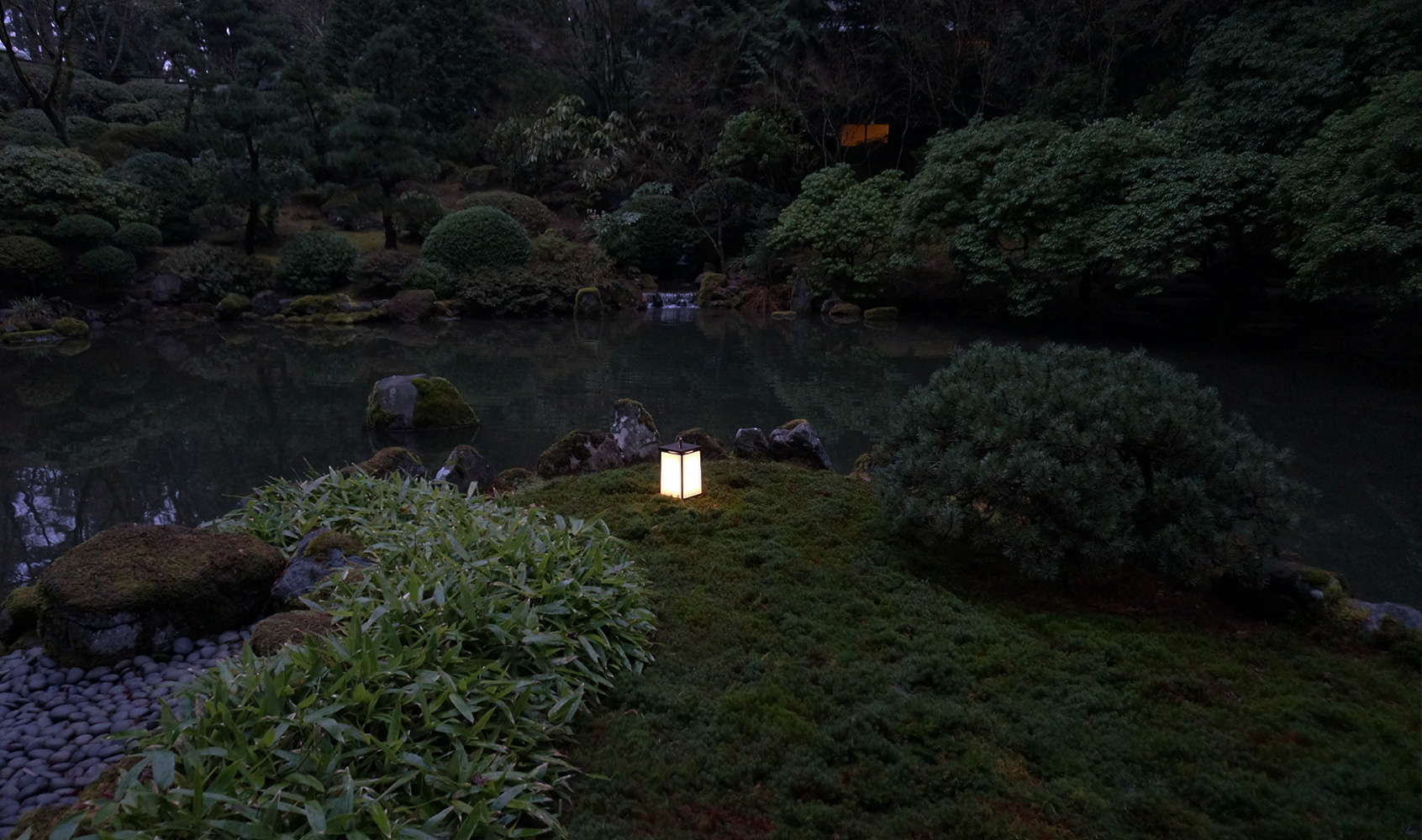
As darkness cloaks the garden earlier and lingers longer during autumn and winter, we reached out to Hiroshi Kira, a business member of NAJGA (The North American Japanese Garden Association) and the founder of HK Lighting. Our aim was to glean insights into the potential of enhancing our experiences within the Japanese garden throughout the shorter days of the year. This could be achieved through subtle and suitable employment of evening lighting techniques.
NAJGA: What do you think has been the value / role of evening lighting in the Japanese gardens of yesterday and of today?
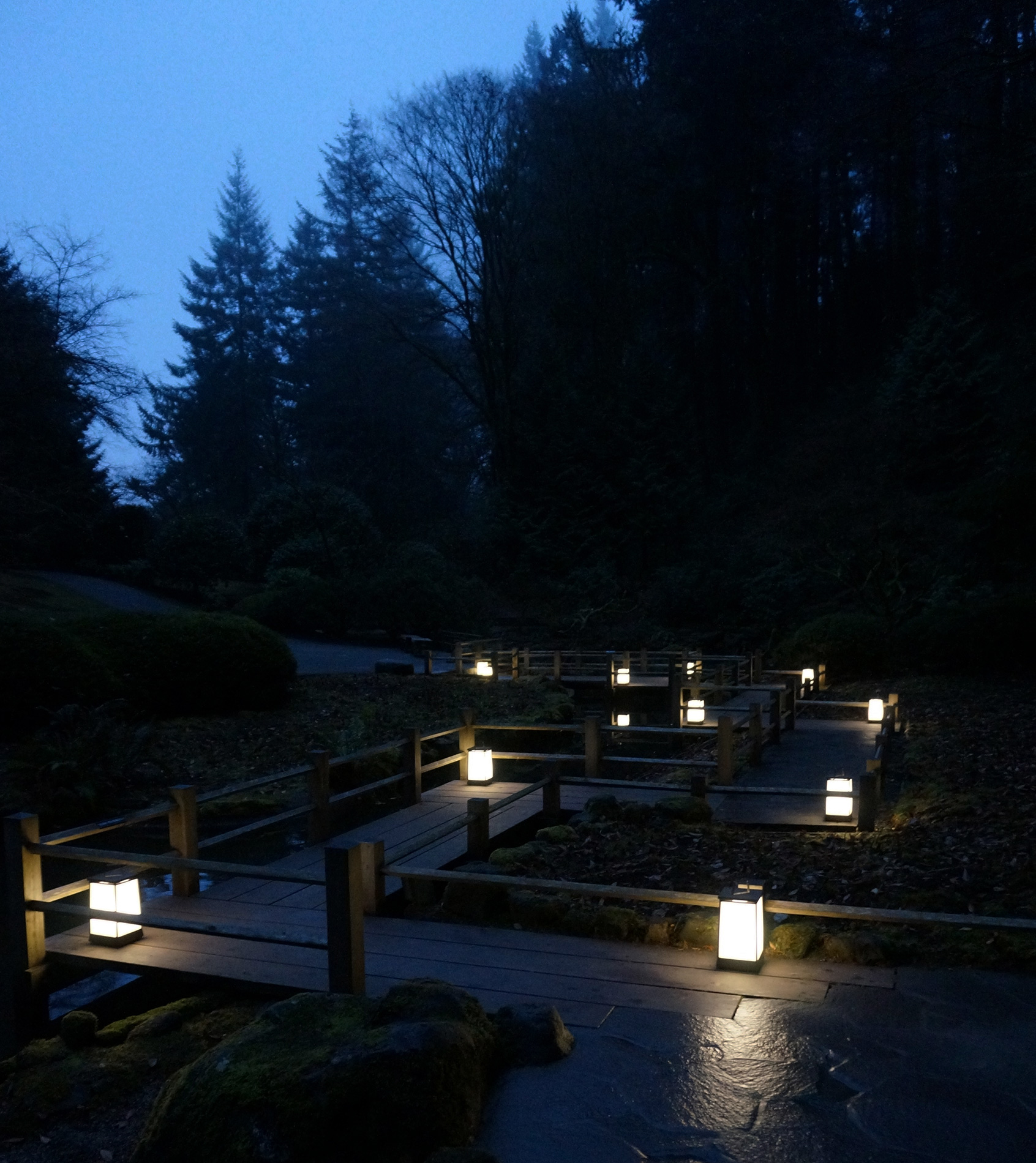
HK: In ancient Japan, the garden evolved as philosophical expression of Buddhist monks who traditionally designed gardens in an abstract way, based on their imagination, symbolism and a series of thoughts originating from Shinto and Zen philosophies. A suitable definition of a Japanese garden would be: The garden is not part of the structure, but the structure is part of the garden.
Japanese gardens create a harmony between the human mind of the designer and the cultural experience of the participants.
Since there were only limited light sources available in the past, Japanese gardens were primarily designed for experience of reflection and enjoyment during the day and on moonlit nights. They were also illuminated by oil lamps used in stone lanterns that were located as part of the gardens.
In particular the moonlight created a play with shadows and light, accentuating parts of the garden differently at times, constantly changing as it wandered across the night sky. The effect was a natural, tranquil, and harmonious atmospheric lighting against the backdrop of the dark night sky.
Today’s Japanese gardens still serve the same philosophical purpose, and since artificial lighting was not used traditionally in the gardens of the past, lighting gardens with modern luminaires has to take a subtle approach (i.e., luminaires that are invisible during daytime), so as not to disturb the design ideas created the Japanese garden, and the harmony of the design and its cultural experience.
Any lighting designer is required to understand the essence of a Japanese garden first and have the necessary sensitivity while accentuating the lighting design. Words like soft scenic lighting, calmness, tranquility, and subtlety come to mind for the right approach.
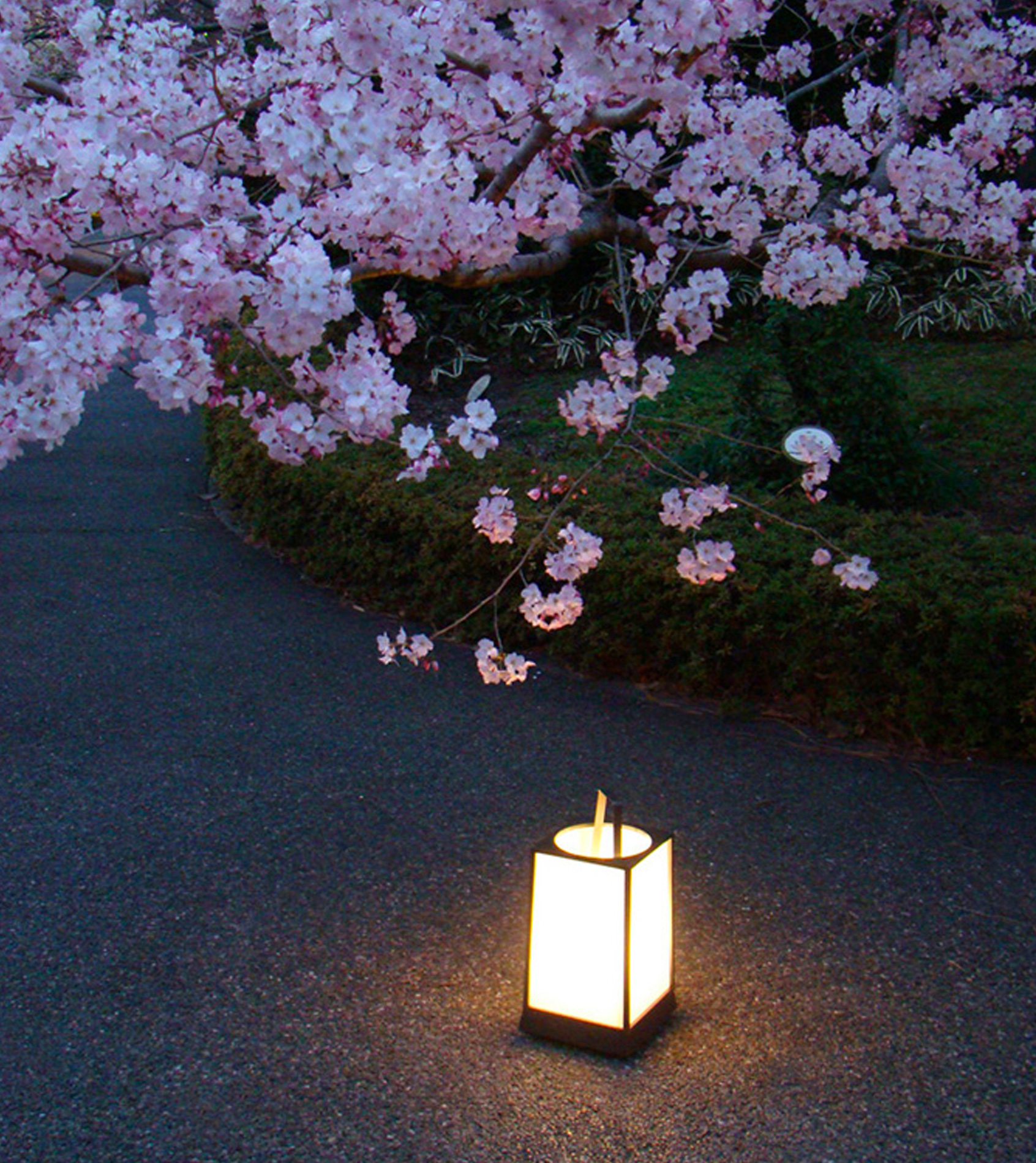
NAJGA: How does your company meet the lighting requirements of Japanese gardens today? What products / services are particularly suited for their purposes?
HK: During the early time of the Japanese gardens, the moon and some fire-based lights were the main sources for the gardens after sunset. In this day and age, we have many sources of artificial light, including LED. The man-made provenance of such lighting is significant. From a philosophical perspective, we can conclude that, if humans are an integral part of nature, man-made light sources are also natural tools to provide light in contemporary Japanese gardens.
However, we have to be vigilant about how to utilize these lights in order to preserve the original philosophy of the Japanese garden when it was designed. It is our belief that the lighting designer for a Japanese garden should not imitate the garden as it appears in day light, but rather recreate the same harmony and subtlety as on a moonlit night, bringing out the essence of the Japanese garden as if it were a stylized Japanese woodblock print.
We offer eclectic selections of luminaires to assist the professional lighting designer in realizing their design ideas to the fullest. These compact luminaires are highly adaptable and adjustable to minimize visibility during daytime. A wide range of accessories will assist the lighting designer in using light in a focused way, while avoiding trespassing light and glare or spillage issues. The end result is the creation of a subtle, scenic lighting effect.
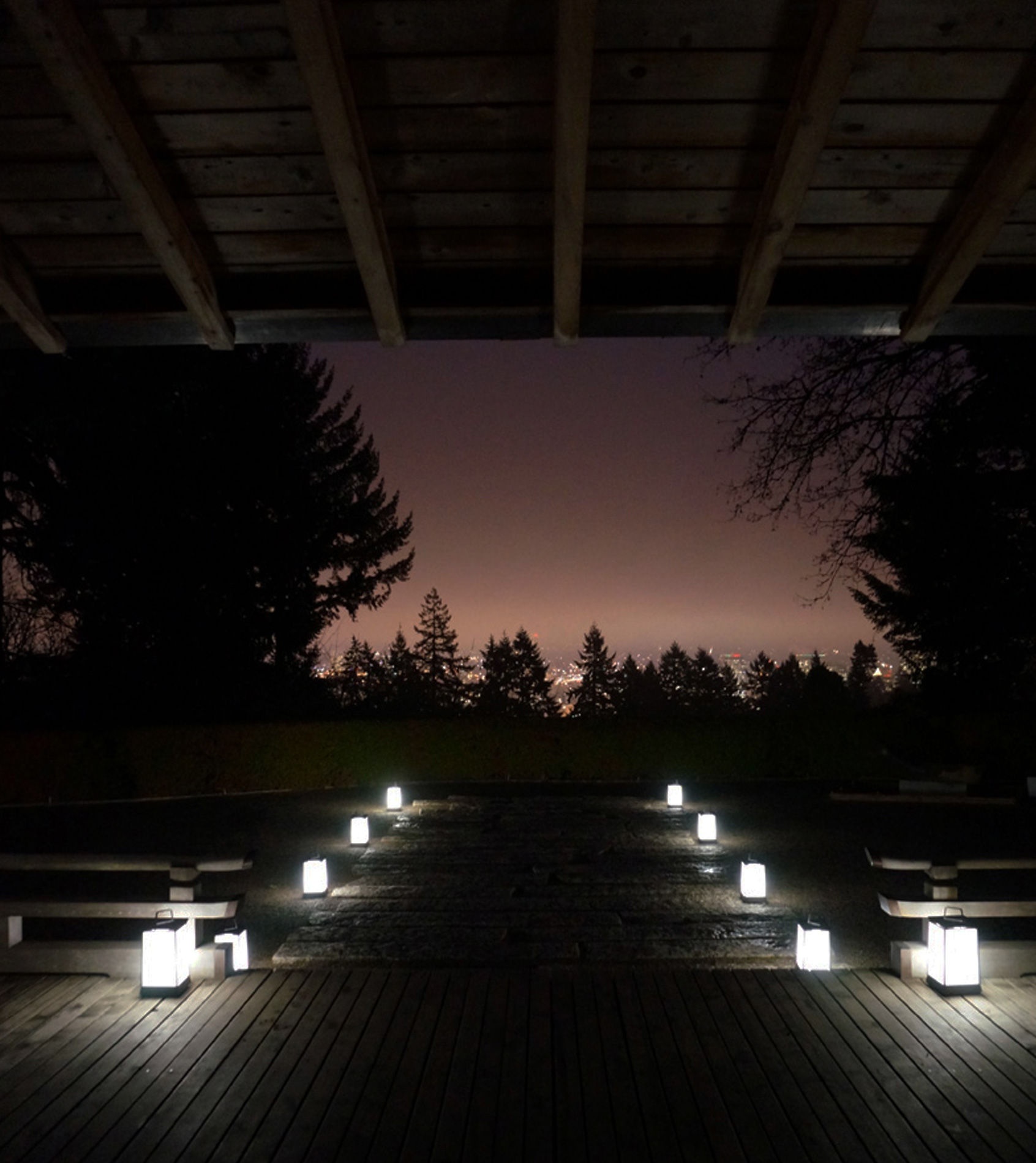
NAJGA: Can you describe the lighting design philosophy / approach that you observe in your work with Japanese garden clients?
HK: Commercial reasons increasingly encourage the use of Japanese gardens at night, and even on nights without much moon light, But the garden owners have strong ideas about making their garden usable at night, professional lighting designers and manufacturers of luminaires who wrongly apply lighting will ultimately disrupt the desired effect of realizing a sense of peace, harmony, and tranquility. In the deepest sense, it is the experience of the feeling that we are a part of nature that needs to be maintained through lighting.
Professional and sensitive lighting designers observe certain lighting principles when illuminating a Japanese garden. These principles are:
• Illuminate so expertly so you never see the source of light.
• Install luminaires elusively.
• Create subtle garden lighting to prevent nighttime obscurity.
• Create nighttime magic in harmony with the essence of a Japanese garden.
• Don’t mimic daylight. The mantra is to use more fixtures and less wattage, for an effect that’s subtle and harmonious at night, so that one always feels part of the environment, not overpowered by it.
• Help people feel comfortable outside in the dark, defining a garden’s boundaries, shape and volume with washes of light.
• Light pathways just enough so you can see them safely.
• Respect the night sky; it doesn’t take much night lighting for effect. Think about the full moon, which doesn’t give all that much light, but is sufficient.
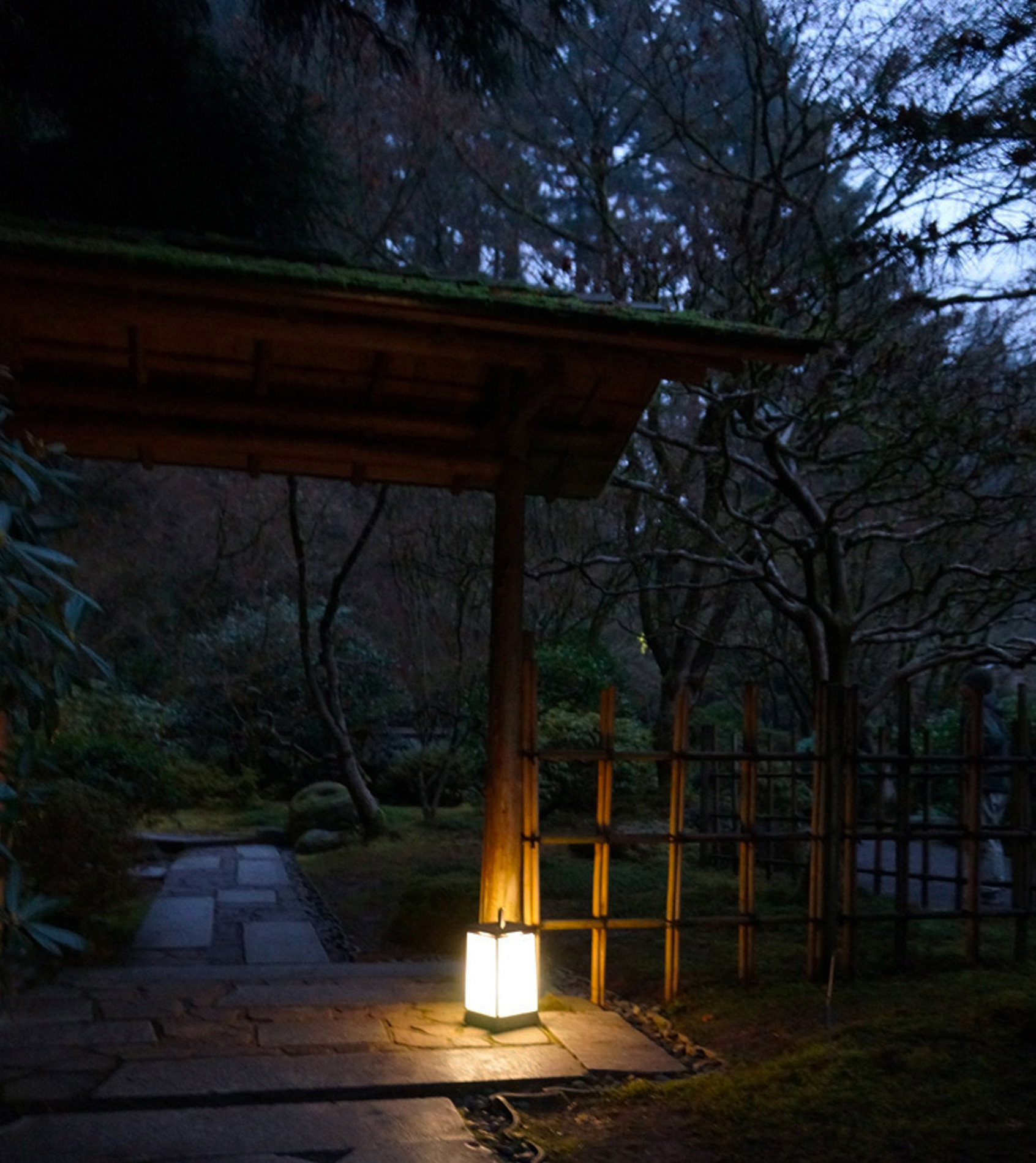
NAJGA: Can you provide some examples of Japanese gardens you’ve worked with? Please describe how you worked with them and what products / services you provided?
HK: For the Portland Japanese Garden, the objective was to have a portable luminaire that could be placed in specific areas of the garden and buildings during summer events, but removed afterwards so that the garden can once more purely revel in the glow of a moonlit sky. At the beginning of the process to develop the luminaire with the required function, we researched about the lights that have traditionally been used in Japanese gardens and found an example of portable lantern called a “roji andon” (tea garden lamp) which has the same function required for Portland. The roji andon is used as a path light in the tea garden after dark and provides a mild brightness to the periphery through washi paper.
Our challenge was to refine the traditional idea of the roji andon as a contemporary lighting product without losing the quality of the original.
The developed luminaire is composed of weather-proof materials such as pre‐oxidized metal, oil‐stained wood, acrylic shade and using LED bulbs as the light source with rechargeable battery to provide portability and flexibility as required. The light from the luminaires contributes an effect of both solemnity and festivity at the Portland Japanese Garden.
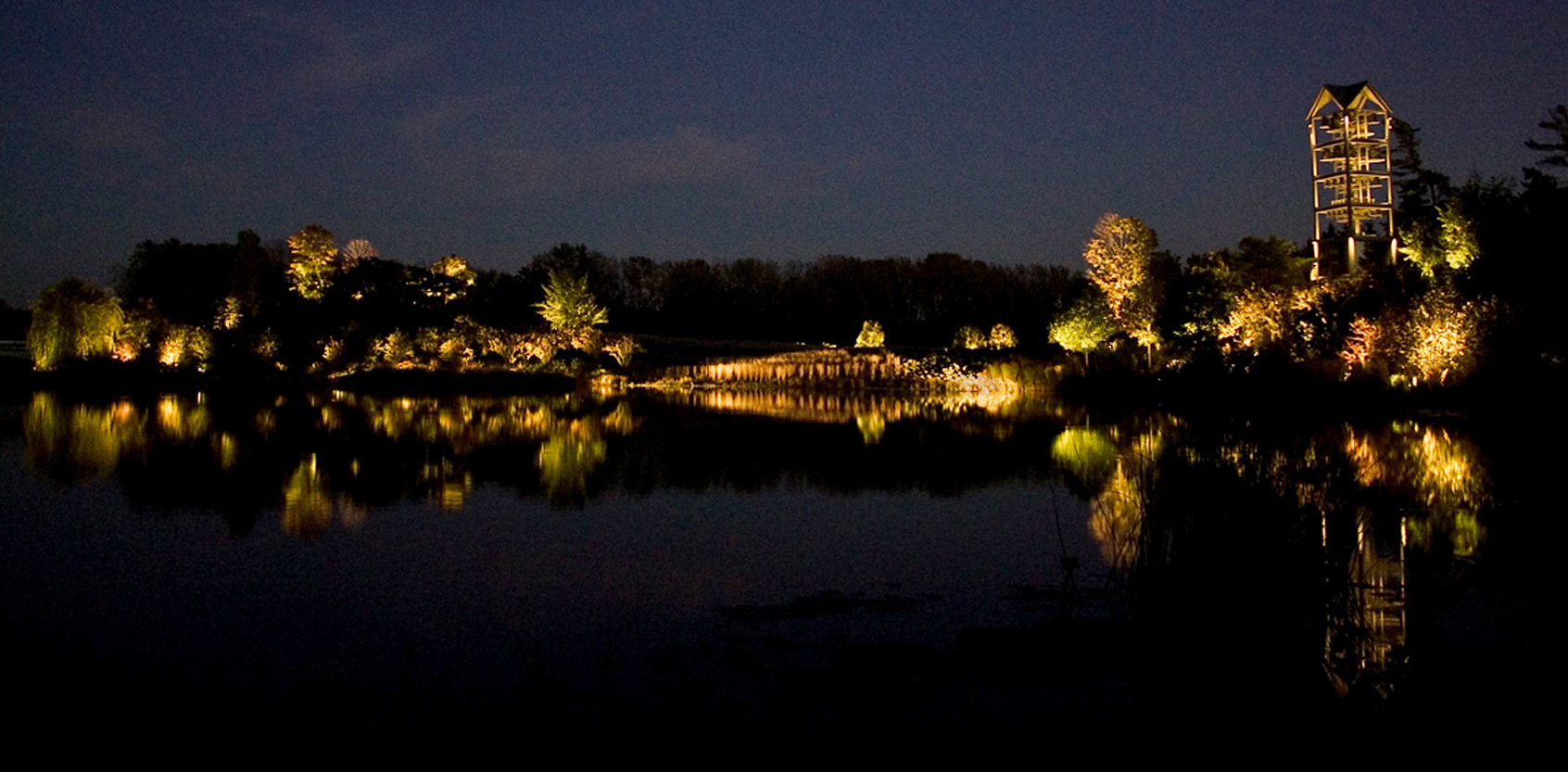
NAJGA: Aside from Japanese gardens, what are some of the most notable garden / outdoor installations your company has done?
Evening Island at the Chicago Botanical Garden
(Lighting Design: Jan Moyer Design)
Disney Resorts, Orlando, Anaheim and Hawaii
(Lighting Design: Lighting Design Alliance)
Garden by the Bay, Singapore
(Lighting Design: Lighting Planners Associates)
Nagaragawa‐River Cherry Promenade, Japan
(Lighting Design: Kilt Planning)
Originally published by:
The North American Japanese Garden Association

